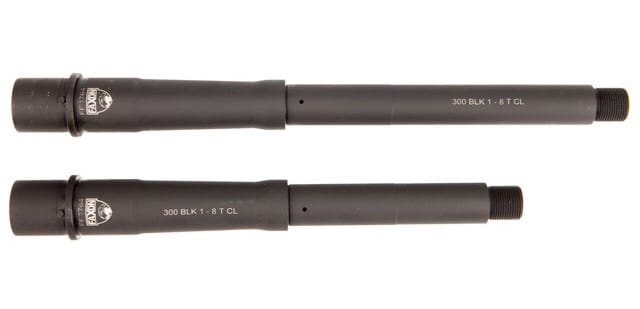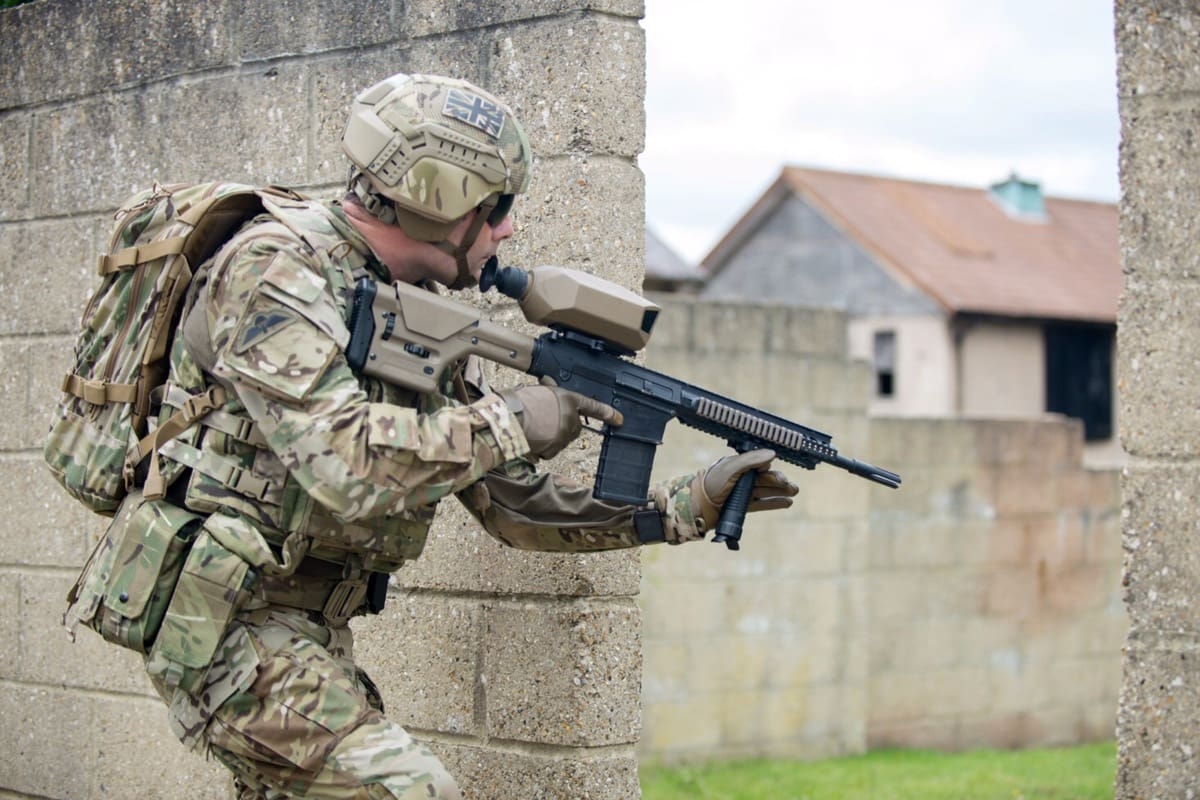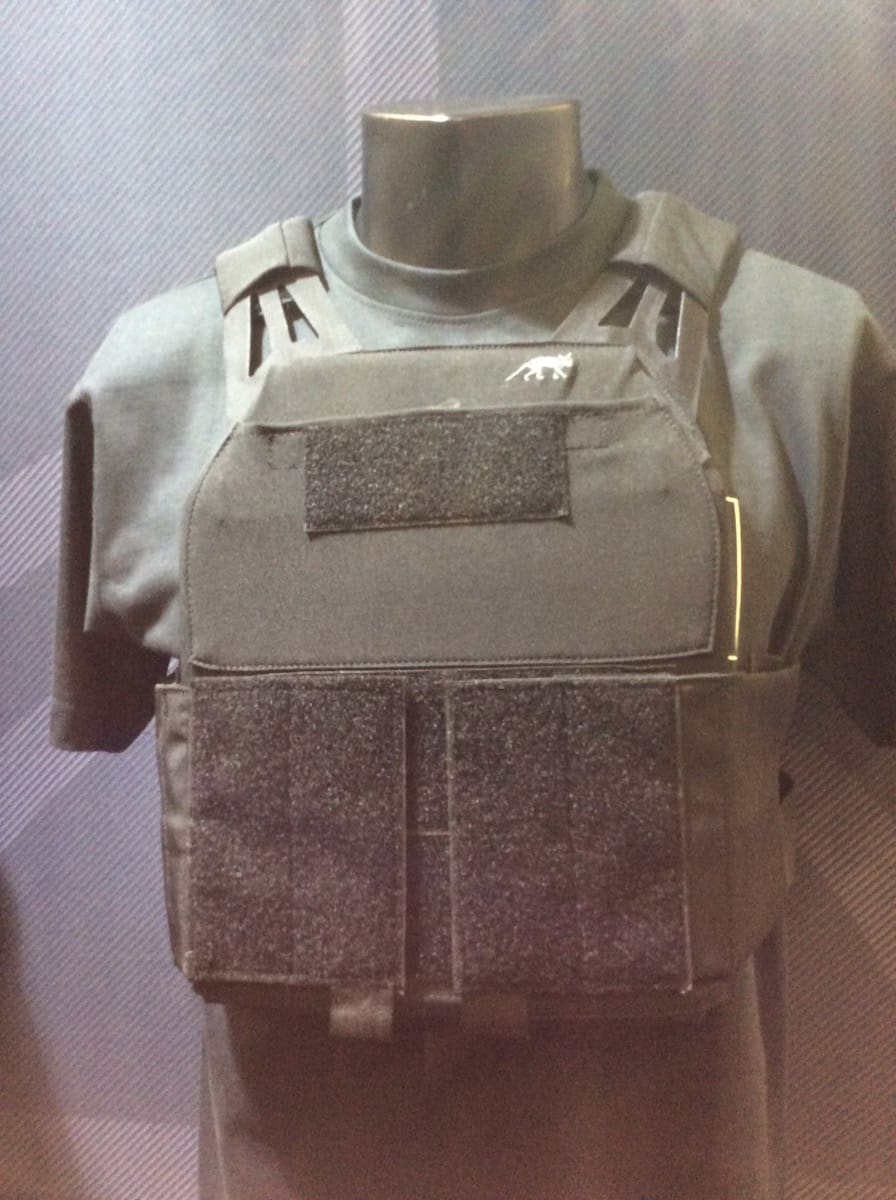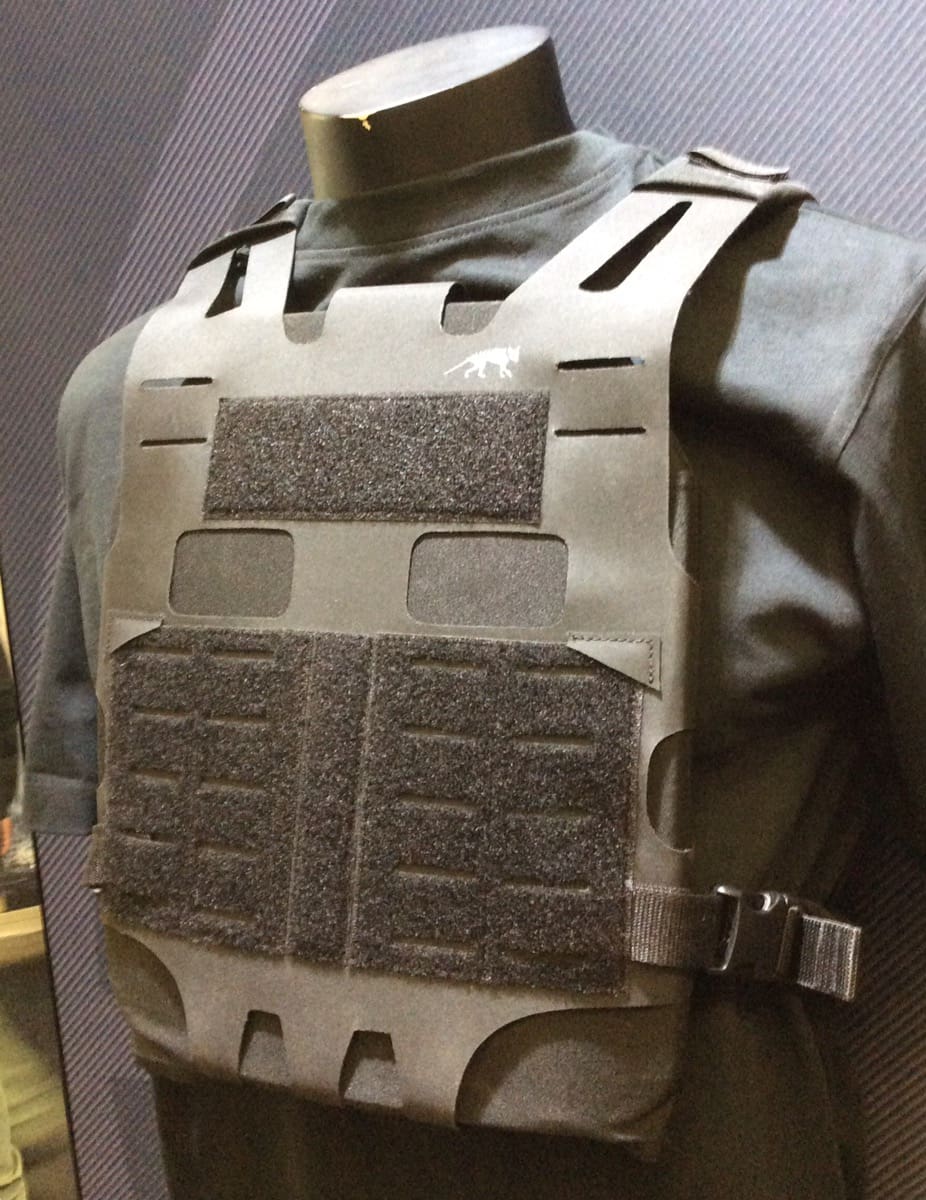In this article on www.marcorsyscom.marines.mil, entitled, “Marines make an entrance with new breaching capabilities” By Ashley Calingo, Office of Public Affairs and Communications, Marine Corps Systems Command, she discusses the newly acquired Mission Enhancement Kits for the Corps’ Mossberg 500A2 Shotguns. The MEK consists of a shorter breaching barrel and optionsl stock configurations.
The first contract for these kits was awarded to Pro Patria by USSOCOM back in 2009. Since then, Pro Patria has provided kits to the US Army, US Navy and US Marine Corps.
Marine Corps Base Quantico, Va. —
To Marines on a breaching mission, the shotgun is more than just a weapon. It is a tool Marines use to breach—or gain entry into—an enemy-held building using the minimal amount of force. Marine Corps Systems Command’s Military Enhancement Kit gives Marines the tactical advantage by transforming current shotguns into a more compact and versatile weapon.
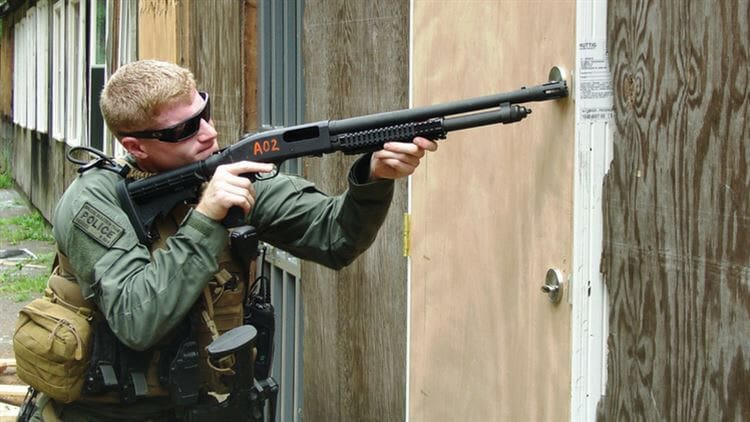
Sgt. Trenton Hansen, a Special Reaction Team member from the Marine Corps Base Quantico Provost Marshals Office, uses a Military Enhancement Kit to breach open a door. The MEK provides versatile capabilities to Marine units trained to engage on breaching missions. The kit builds upon the Mossberg M500A2, but gives Marines a shorter, vented breaching barrel and three interchangeable buttstock attachments, including the collapsible buttstock featured in this photo. (U.S. Marine Corps photo by Alan Matthews)
The MEK is a ballistic breaching tool—or what Marines use to safely shoot the locks off of doors. It is designed to augment the M500A2 pump-action shotguns currently used by Marine reconnaissance, security forces, military police, explosive ordnance disposal and special operations units. The kit gives Marines a shorter, vented breaching barrel and three interchangeable buttstock attachments: a pistol grip, fixed buttstock and a collapsible buttstock. At 18 inches long, the MEK’s barrel is nearly three inches shorter than the M500A2’s standard barrel, making it less cumbersome for Marines to carry.
“When you’re breaching or conducting methods of entry, having the ability to secure the weapon on your body without it becoming cumbersome is important,” said Gunnery Sgt. Michael Flor, ballistic breaching course chief and senior instructor at the Methods of Entry School, the Marine Corps center of excellence for breaching. “Having a shorter barrel and a pistol grip removes all of the extra space that is not necessary for ballistic breaching. So when you stow it, you can stow it much more rapidly.”
Current shotguns can be modified by Marine Corps armorers with a special adaptor from the MEK that allows Marines to easily interchange the buttstocks in a matter of seconds without the need for additional tools.
“Having the ability to transition through the three stocks—the folding, the pistol grip and the fixed—makes the weapons more versatile,” Flor said. “The kit allows the weapon to be tailored to the tactical user at the user level.”
The shorter breaching barrel and different stock grips, namely the pistol grip, offer several tactical advantages, Flor said.
“For instance, if reconnaissance Marines repel from a helicopter carrying a long weapon system that’s unsecured, it can catch on parts of the air frame or the rope and become a safety hazard,” Flor said. “Having a shorter weapon system, secured tightly, is more manageable. That’s an advantage.”
The MEK also yields significant savings for the Marine Corps—another advantage.
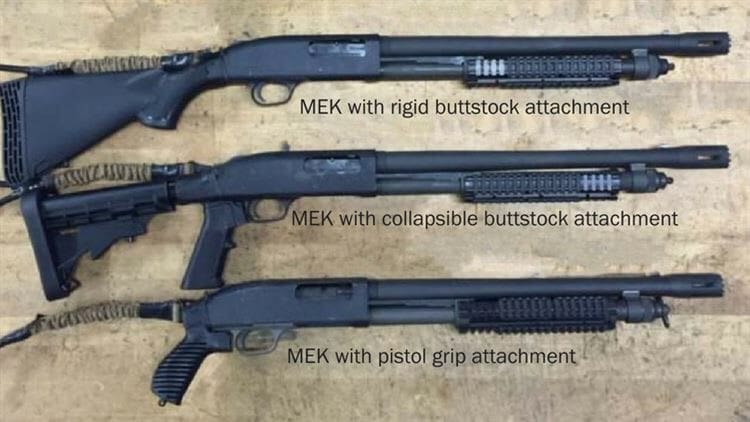
The Military Enhancement Kit provides versatile capabilities to Marine units trained to engage on breaching missions. The kit builds upon the Mossberg M500A2, but gives Marines a shorter, vented breaching barrel and three interchangeable buttstock attachments pictured here. (U.S. Marine Corps photo by Alan Matthews)
“By using the MEK with currently-fielded M500A2 shotguns, the Marine Corps only had to buy the kits,” said Maj. Paul Gillikin, Special Purpose Weapons team lead in MCSC’s Infantry Weapons Systems. “Also, modifying the shotgun in local armories will save time and shipping costs, and units will retain their shotguns on-hand, as opposed to sending them in to a depot for maintenance.”
As part of IWS’s evaluation process, Gillikin and his team turned the kit over to Marines at the Methods of Entry School, located aboard Marine Corps Base Quantico. MOES instructors teach breaching methodology to Marines assigned to Reconnaissance and Force Reconnaissance units, Security Forces Regiment Recapture Tactics teams, Military Police Special Reaction teams, Explosive Ordnance Disposal units and Marine Special Operations Command units. Marines who undergo training at MOES will be the primary users of the kit.
“We reached out early to MOES, and the feedback we received from experts like Gunnery Sgt. Flor and Master Sgt. Bryan Maass was key to helping us get the MEK to Marines,” said Gillikin. “They were able to articulate a capability and requirement, and assist us in test design and execution. Infantry Weapons Systems-South logistics personnel took it the rest of the way by completing the cataloging process, which will allow units to sustain the kit through normal supply requisitioning.”
The MEK is currently being fielded to select units across the Marine Corps, and is one of the many capabilities offered to Marines by MCSC’s Infantry Weapons Systems. IWS strives to ensure that Marines are equipped and ready for their next challenge, whether that means introducing new weapons systems or, in the case of the MEK, enhancing current ones.



